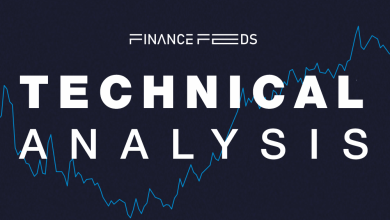What Liquidity Fragmentation Means for Retail FX in 2025


Ask any seasoned FX dealer what drives spreads, and you’ll get a handful of familiar answers: volatility, economic data, and, of course, liquidity. But in 2025, it isn’t the quantity of liquidity that keeps retail desks on their toes; it’s where that liquidity sits. Fragmentation, once an institutional headache, is now the daily reality of every MetaTrader, cTrader, and API session in the retail world.
Understanding how this splintered landscape affects trading efficiency, execution, and market access is no longer optional; it’s table stakes for brokers, liquidity providers (LPs), and fintech firms that want to stay relevant. For traders, navigating this environment often begins with selecting from a that can efficiently aggregate liquidity across fragmented venues.
Liquidity Fragmentation 101: From Single Source to Patchwork Quilt
Liquidity fragmentation occurs when order flow disperses across multiple venues – prime-of-primes, ECNs, dark pools, and even DeFi bridges rather than converging in a single deep pool. Historically, Tier-1 banks dominated spot FX pricing, which then trickled down through a relatively linear distribution chain. Today, (NBLPs) account for approximately 30–35% of e-FX trading volumes, reflecting a significant shift in market dynamics. In 2025, three structural shifts have blown that model apart:
- Regulatory pressures (e.g., Basel III finalization) have pushed banks to limit balance-sheet usage, reducing their risk appetite and forcing non-bank market-makers to step in.
- Ultra-low latency connectivity is now affordable, enabling boutique LPs in Singapore, Dubai, and Warsaw to connect directly with retail brokers.
- Retail volumes themselves have exploded, propelled by mobile apps and copy-trading, making this segment too large for price makers to ignore.
The result: multiple, partially overlapping liquidity silos that don’t always “talk” to each other. Each venue shows a slightly diverse best bid/offer, depth, and response time. For market participants, that means the concept of the market price is a moving target.
Execution Quality Becomes a Data Science hardy
In a fragmented ecosystem, simply quoting a tight spread is no longer a competitive edge; consistent fill probability and slippage control are the new holy grails. Retail brokers must stitch together liquidity from eight, ten, or even twenty venues. Doing it well requires data-driven decision-making:
- Smart Order Routing (SOR). Modern SOR engines evaluate latency, reject ratios, and last-look policies in real time before hitting an LP. The goal is not just price, but the expected outcome.
- Venue Scoring. Machine-learning models score LPs by time-of-day performance, currencies, and even news-event behavior. If an ECN widens in Asia sessions, the algorithm adapts.
- Post-Trade TCA. Transaction cost analysis used to be a quarterly compliance chore; in 2025, brokers run TCA intra-day, feeding the output back into routing logic within minutes.
For traders, this means execution quality varies dramatically from broker to broker. Two accounts trading the identical EUR/USD headline can view diverse slippage simply because their brokers weigh liquidity sources diversely at 13:30 GMT.
The Rise of the NBM (Non-Bank Market-Maker) and Its Implications
Non‑bank liquidity providers, including proprietary trading firms like Hudson River Trading (5–10% equities volume), GTS (3–5%), and dark‑pool venues (15% of U.S. equity trading), now supply a , up sharply from a few years ago. Why does that matter?
- Speed vs. Balance-Sheet. NBMs run leaner operations with colocation and FPGA-based pricing engines, yielding sub-1 ms quote updates. But they hold smaller risk inventories, meaning they skew quotes aggressively during stress events.
- Pricing Diversity. Because NBMs use proprietary risk models, their EUR/SEK or USD/TRY pricing often diverges from bank curves, giving brokers opportunities to cherry-pick but also increasing quote dispersion.
- Relationship Realignment. Traditional bank relationships were layered with credit lines and sales coverage. NBMs deal primarily through prime brokers or prime-of-primes, reducing the human element. For retail brokers, that translates into a more transactional relationship: lose flow quality, risk immediate cut-off.
The upside is tighter spreads during normal conditions. The downside is the potential for sudden evaporation of liquidity when a non-farm payroll print shocks the market, exactly when retail traders crave stability.

Stablecoins and DeFi Gateways: New Liquidity, New Frictions
Stablecoin-denominated as an exotic sideshow. In 2025, they represent a non-trivial slice of overnight Asian retail volume, largely because settlement is 24/7 and margin can be ported across venues instantly. However, these new pools deepen fragmentation:
- Parallel Order Books. DeFi protocols maintain separate books from traditional ECNs. Arbitrageurs bridge gaps, but price latency between on-chain and off-chain venues can reach hundreds of milliseconds, enough for micro-structure misalignment.
- Custody and Counterparty Layers. Brokers need digital-asset custodians plus traditional prime brokers, adding hops to the routing chain and raising operational risk.
- Regulatory Patchwork. A US retail client trading a USDC-based EUR/USD pair touches diverse licensing regimes than a European client trading the identical pair in fiat. Compliance teams spend more time mapping these flows than marketing teams spend promoting them.
Still, serious players view on-chain liquidity as insurance. If bank credit lines shrink during a stress episode, stablecoin pools can be the backstop, albeit at wider spreads.
Practical Tactics for Brokers in 2025
Fragmentation is not a bug; it’s a permanent feature. Successful retail brokers embrace it strategically:
Multi-Tier Aggregation
Aggregating at the LP level is no longer enough. Forward-looking brokers cascade aggregation: first within venue type (bank, NBM, DeFi), then across types. This reduces internal crossing of incompatible quote policies.
Latency Equalization
Co-locate matching engines in multiple data centers (LD4, NY4, TY3), then normalize timestamps to microsecond precision. Equalization prevents quicker venues from dominating the book in a way that misleads traders about fill probability.
Dynamic Mark-Ups
Instead of static mark-ups, brokers apply risk-weighted mark-ups that widen only when an LP’s reject ratio spikes. Retail traders pay wider spreads precisely when fill uncertainty rises, keeping broker P&L predictable without blanket widening.
Client Segmentation by Flow Quality
Using machine-learning cluster analysis, brokers categorize clients (e.g., news traders, copy-traders, latency arbitrageurs). They then map each cluster to tailored liquidity mixes, discouraging price toxic flow from polluting standard streams.
Impact on Retail Trader Behavior
Retail traders are more sophisticated in 2025. They track execution statistics in dashboards that look uncannily like institutional EMS screens. Expected changes in behavior include:
- Venue Shopping. Traders maintain multiple broker accounts, arbitraging brokers’ diverse liquidity mixes, especially around macro releases.
- Algo Uptake. Python-based algo toolkits let clients write simple smart order scripts that submit IOC orders to test depth before placing a larger trade.
- Liquidity-Aware Position Sizing. Retail traders size down during Tokyo lunch or shift to major pairs when depth thins, an institutional practice now democratized by transparent depth-of-market (DOM) widgets.
For brokers, educating clients on fragmentation can even be a loyalty tool. Those who publish real-time LP depth statistics view lower churn because clients feel empowered rather than blindsided.
Conclusion
Liquidity fragmentation is not inherently excellent or poor; it is a condition to be managed. The winners in 2025 are the firms that transform fragmentation into optionality, pulling from the venue that best fits each trade’s risk, size, and timing. For brokers, that means investing in routing intelligence, transparent reporting, and diversified LP relationships. For liquidity providers, it means diverseiating through consistency and data-sharing rather than raw spread alone. And for retail traders, it heralds an era where understanding where your order goes is as critical as timing when you click the button.
Disclaimer: This content is provided by a sponsor. FinanceFeeds does not independently verify the legitimacy, credibility, claims, or financial viability of the information or description of services mentioned. As such, we bear no responsibility for any potential risks, inaccuracies, or misleading representations related to the content. This post does not constitute financial advice or a recommendation and should not be treated as such. We strongly advise viewking independent financial guidance from a qualified and regulated professional before engaging in any investment or financial activities. Please review our for more details.







